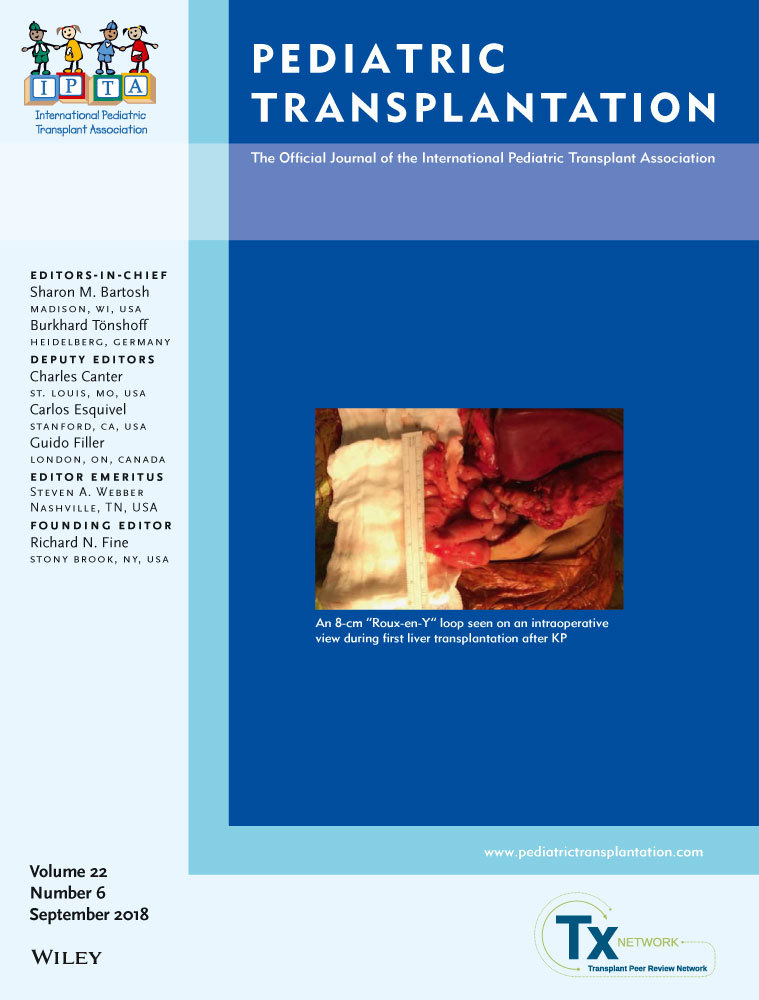Risk factors for persistent hyperparathyroidism in children with stable renal function after kidney transplantation
Abstract
This study aimed to investigate the risk factors for PHPT in children with stable renal function who received KT. We retrospectively analyzed the clinical findings and laboratory results of patients who underwent KT below 19 years of age, between 1996 and 2016 at our hospital. Patients were followed up for more than 1 year after KT. We calculated the mean ± standard deviation or median [minimum – maximum] for each parameter. We included a total of 46 patients (male:female = 26:20). Twelve patients (26.1%) were included in the PHPT group, and 34 (73.9%) were in the nPTH group. The dialysis duration was 57.1 ± 49.9, 44 [0-145] months in the PHPT group and 23.5 ± 25.8, 15 [1-121] months in the nPTH group (P = .040). The post-KT total CO2 level was significantly higher in the PHPT group (P = .022). The pre- (P = .021) and post-KT (P = .005) and 3-month average (P = .018) iPTH levels were also significantly higher in PHPT group. The height z-score showed a negative correlation, and the pre-KT, 3-month average phosphorus and alkaline phosphate levels showed positive correlations with iPTH levels, at 1 year after KT. Patients who undergo prolonged durations of dialysis, have increased iPTH levels before and after KT, and have low bicarbonate levels after KT are at risk of PHPT and should be monitored carefully.
CONFLICT OF INTEREST
The authors declare that they have no conflict of interest.




